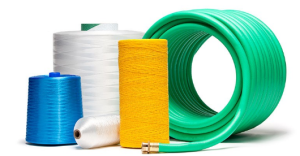Colour fastness concept and its type analysis Colour fastness is the ability of printed textiles…
Master Heat Tunnel Testing
Are you navigating the complex world of heat tunnel testing for textiles and feeling overwhelmed by the intricacies?
Understanding the nuances of this critical process ensures the durability and safety of your textile products.
This comprehensive guide breaks down heat tunnel testing from basics to understanding the troubleshooting and future innovations. We will provide everything for you to master this crucial aspect of textile quality control. So let’s bake the cake!
Table of Contents
- What is Heat Tunnel Testing?
- Standards and Principles
- Equipment Introduction
- Setting Test Conditions
- Sample Requirements
- Test Procedures
- Test Indicators
- Result Evaluation
- Quality Management
- Maintenance and Troubleshooting
- Future Outlook and Innovations
- Conclusion
What is Heat Tunnel Testing?
Heat tunnel testing is a vital step in textile quality control, evaluating the endurance of products. This method involves exposing textile samples to controlled temperature and airflow, simulating real-world conditions to assess performance under heat stress. Heat tunnel testing predicts how textiles respond to elevated temperatures, which is crucial for determining their suitability in various applications.
Historical Context
Originating as a response to the need for standardized assessments in textile manufacturing, heat tunnel testing has evolved with technological and industry advancements.
Purposes and Application Scenarios
Ensuring Durability and Safety
The primary goal is to guarantee product longevity and safety by identifying weaknesses through real-world conditions. Understanding heat tunnel testing is crucial for manufacturers delivering textiles that withstand time and usage.
Diverse Applications
Heat tunnel testing spans industries, ensuring products from apparel to industrial textiles meet rigorous standards in today’s market.
Standards and Principles
Standards and principles are the backbone of reliable heat tunnel testing. Adhering to norms ensures accurate and universally understood results in the textile industry.
Standards for Heat Tunnel Testing Methods
In textile quality control, global standards are the foundation for precise and reliable heat tunnel testing.
Overview of Globally Recognized Standards
International standards, established by organizations like ISO and ASTM, define the rules for heat tunnel testing. Knowing these standards is crucial for labs and manufacturers aiming to meet global quality benchmarks.
Importance of Adherence for Industry Compliance
Following standards isn’t just a formality; it’s a strategic move for industry compliance. It’s a commitment to delivering products that surpass customer and regulatory expectations, creating consistency and reliability in testing.
Testing Principles
Fundamental Principles Governing Heat Tunnel Testing
Heat tunnel testing mimics real-world conditions textiles might encounter. It involves subjecting samples to controlled temperatures and airflow to assess performance under stressors.
Key Considerations in Designing Effective Testing Methods
Crafting effective methods demands a deep understanding of materials, considering factors like textile type, intended use, and industry-specific requirements. Designing protocols mirroring real-world scenarios ensures practical evaluations of textile performance.
Equipment Introduction
Composition of Heat Tunnel Testing Machine
Understanding a heat tunnel testing machine starts with breaking down its components. The main parts of this complex equipment are vital in the symphony of heat tunnel testing, producing reliable results for textile assessments. Understanding their roles enhances comprehension of this sophisticated testing apparatus.
An In-depth Look at the Components
- Heating Element: Generates controlled temperatures, the machine’s core.
- Airflow System: Directs consistent airflow over textile samples.
- Conveyor Belt: Systematically moves samples through the heat tunnel.
- Temperature Controls: Regulates and monitors heat levels precisely.
- Insulation: Prevents heat leakage, maintaining a stable testing environment.
Role and Significance of Each Part
- Heating Element: Drives testing conditions.
- Airflow System: Simulates real-world textile conditions.
- Conveyor Belt: Ensures uniform test results.
- Temperature Controls: Critical for reliable testing.
- Insulation: Maintains accurate assessments by containing heat.
Description of Each Component’s Function
To grasp a heat tunnel testing machine, explore each part’s function.
Detailed Breakdown of Machine Functionality
- Heating Element Function: Initiates and sustains testing temperature.
- Airflow System Function: Creates controlled environments for diverse textiles.
- Conveyor Belt Function: Ensures continuous sample movement during testing.
- Temperature Controls Function: Monitors and adjusts heat for specified parameters.
- Insulation Function: Minimizes heat loss, preserving testing conditions.
Understanding the Interplay of Components
These components work together. The heating element sets the stage, the airflow system creates conditions, the conveyor belt ensures systematic testing, temperature controls maintain precision, and insulation safeguards accuracy.
Each part is vital in the symphony of heat tunnel testing, producing reliable results for textile assessments. Understanding their roles enhances comprehension of this sophisticated testing apparatus.
Setting Test Conditions
Setting test conditions goes beyond adjusting temperatures and fans; it requires understanding how textiles respond to temperature and airflow variations. Mastery of these details is the key to unlocking reliable and meaningful heat tunnel test results.
Temperature Range and Variation Patterns
Precise temperature control is crucial for effective heat tunnel testing. Different textiles require specific temperature ranges:
- Natural Fibers: Cotton and wool may need slightly higher temperatures.
- Synthetic Fibers: Polyester and nylon might respond better to lower temperatures.
Temperature Patterns During Testing
- Steady-State Testing: Consistent temperature for a set duration.
- Fluctuating Conditions: Mimicking dynamic temperature changes to assess textile responses.
Principles for Setting Airflow
Controlled airflow is vital for accurate heat tunnel test results. It involves:
- Simulating Real Conditions: Mimicking daily environmental conditions.
- Uniform Exposure: Ensuring equal testing for each part of the textile.
Guidelines for Airflow Conditions
- Directional Control: Strategically directing airflow over textile samples.
- Adjustable Intensity: Tailoring airflow intensity based on textile type.
- Consideration of Sample Size: Adapting airflow for different-sized samples.
Sample Requirements
The size, cutting method, and accurate identification of textile samples are critical factors influencing the reliability of heat tunnel test results. Paying attention to these sample requirements ensures the testing process is a precise evaluation of textile performance, not just a formality.
Size and Cutting Method of Samples
Determining the right size and cutting method is crucial in heat tunnel testing.
Factors Influencing Sample Size
- Textile Type: Different materials may need different sample sizes for accurate testing.
- Testing Objectives: The test’s purpose determines the size for meaningful results.
Optimal Cutting Methods for Diverse Textiles
- Natural Fibers: Use a straight-edge cutting method for fabrics like cotton or wool.
- Synthetic Fibers: Laser cutting may be more suitable for precise edges in materials like polyester.
Marking and Recording Methods
Accurate sample identification is crucial for order and reliability in heat tunnel testing.
Importance of Accurate Sample Identification
- Avoiding Cross-Contamination: Accurate marking prevents mix-ups, ensuring test result integrity.
- Data Accuracy: Reliable identification is crucial for precise data collection.
Best Practices for Recording and Tracking Samples
- Clear Labeling: Label each sample clearly with relevant information.
- Digital Documentation: Use digital platforms for recording data to minimize manual errors.
- Consistent Tracking: Establish a systematic method to track samples from preparation to testing.
Test Procedures
The precision of heat tunnel testing lies not just in the test duration but in meticulous procedures for sample loading, fixing, and periodic inspections. Consistency in these procedures ensures reliable and real-world reflective textile performance results.
Method of Sample Loading and Fixing
Ensuring reliable heat tunnel testing involves precise sample loading and fixing within the apparatus.
Ensuring Consistency in Sample Placement
- Place samples uniformly to eliminate variables from uneven placement.
- Avoid overlapping to prevent interference in test results.
Importance of Proper Fixing Techniques
- Secure samples minimize movement during testing for accurate assessment.
- Standardized fixing techniques contribute to test condition reproducibility.
The Setting of the Test Duration
Determining the ideal testing timeframe is crucial for reliable and relevant results.
Determining the Ideal Testing Timeframe
Consider material composition and industry standards for testing duration.
Factors Influencing the Duration of the Test
- Thicker materials may require longer testing durations for thorough assessments.
- Consider the textile’s intended use and typical lifespan in determining test duration.
Specifications for Intermediate Inspections
Periodic evaluations during heat tunnel testing are essential for result integrity.
Importance of Periodic Evaluations During Testing
- Identify anomalies early in the testing process.
- Ensure continuous accuracy in data collection and recording.
Criteria for Intermediate Inspections
- Confirm consistent temperature conditions throughout the test.
- Check for sample degradation or unexpected changes.
Test Indicators
Test indicators offer insights into textile behavior under simulated conditions. Understanding critical parameters and balancing qualitative and quantitative analysis ensures an accurate and comprehensive evaluation of textile performance.
Monitoring Critical Parameters
In heat tunnel testing, closely tracking key parameters is crucial for meaningful insights:
- Temperature: Influences material behavior.
- Airflow: Simulates real-world conditions for textiles.
- Sample Movement: Monitors how samples respond to airflow and temperature changes.
- Time: Tracks test duration, ensuring consistency.
Understanding Their Impact
- Temperature Dynamics: Predicts real-world material behavior.
- Airflow Effects: Affects heat distribution, impacting textile reactions.
- Sample Movement Significance: Indicates potential weak points or areas of concern.
Qualitative and Quantitative Analysis
Balancing qualitative observations with quantitative data is the key to heat tunnel testing:
- Qualitative Aspects: Observations on color, texture, and visual changes.
- Quantitative Data: Numerical measurements like tensile strength or shrinkage.
Tools for Accurate Analysis
- Spectrophotometers: Objectively measure color changes.
- Tensile Testing Machines: Quantifies force needed to stretch or break materials.
- Data Logging Software: Ensures accurate recording and analysis.
Result Evaluation
Pass Criteria
In heat tunnel testing, setting pass criteria is crucial. It’s not just about pass or fail; it’s about meeting industry standards and intended textile use.
Criteria for a Successful Test
- Material Integrity: Ensuring the material stays structurally sound.
- Performance Stability: Checking if the textile maintains properties under test conditions.
- Adherence to Standards: Aligning with industry benchmarks.
Factors Influencing Outcome
- Material Type: Different textiles have unique criteria.
- Intended Use: Criteria vary for daily wear, industrial use, or specific applications.
Failure Analysis: Why A Test Fails Is Vital For Improvement?
Common Issues Leading to Failure
- Material Degradation: Breakdown due to excessive heat or airflow.
- Unexpected Reactions: Some materials may behave unexpectedly.
- Non-compliance with Standards: Deviation from industry norms.
Strategies for Addressing Failures
- Material Modification: Adjusting composition for better resilience.
- Testing Protocol Refinement: Fine-tuning parameters based on failure analysis.
- Continuous Improvement: Seeing failures as chances for innovation.
Result evaluation involves clear pass criteria and analyzing failures. Embracing failure for improvement makes heat tunnel testing a catalyst for enhancing textile performance.
Quality Management
Quality management in heat tunnel testing goes beyond the lab. Regular calibration, meticulous data management, and clear reporting contribute to the reliability and industry relevance of the testing process.
Regular Calibration of Equipment
Regular equipment calibration is vital for precision and reliability to uphold the integrity of heat tunnel testing.
Importance of Equipment Calibration for Accurate Results
- Accuracy Assurance: Calibration ensures accurate and consistent results.
- Reliability of Data: Calibrated instruments lead to reliable and reproducible testing outcomes.
Frequency and Procedures for Calibration
- Regular Intervals: Set a schedule for periodic calibration to maintain testing equipment accuracy.
- Trained Professionals: Skilled technicians should conduct calibration to meet industry standards.
- Documentation: Keep detailed records of calibration dates and results for quality control audits.
Data Management and Archiving
Effective data management and archiving are crucial for quality assurance.
Best Practices for Organizing and Storing Test Data
- Digital Platforms: Use digital systems for efficient and organized data storage.
- Categorization: Organize data by parameters like material type, test date, and testing conditions.
- Backup Protocols: Implement regular backup procedures to prevent data loss.
Importance of Maintaining a Comprehensive Data Archive
- Historical Reference: An archive aids trend analysis and pattern recognition.
- Regulatory Compliance: A comprehensive archive ensures compliance with industry and regulatory standards.
Report Format Requirements
Creating standardized, informative test reports is the culmination of heat tunnel testing, ensuring effective communication of insights.
Guidelines for Creating Standardized, Informative Test Reports
- Clarity in Presentation: Clearly articulate testing parameters, procedures, and results.
- Inclusion of Key Metrics: Highlight critical metrics for a comprehensive understanding of textile performance.
- Visual Aids: Incorporate graphs, charts, and images for enhanced data representation.
Ensuring Clarity and Usefulness in Reporting Results
- Accessible Language: Craft reports in language accessible to a broad audience.
- Actionable Recommendations: Provide insights and recommendations for potential improvements.
- Consistency Across Reports: Maintain a standardized format for easy comparison across various tests.
Maintenance and Troubleshooting
The longevity and performance of a heat tunnel testing machine depend on proactive maintenance and a prepared troubleshooting approach. A well-maintained machine ensures accurate results and enhances overall testing efficiency.
Routine Maintenance Practices
Explore Strategic Aspects Of Routine Maintenance
- Daily Checks: Conduct quick visual inspections daily to spot issues.
- Weekly Maintenance: Perform detailed checks, verifying temperature accuracy and assessing wear on moving parts.
- Monthly Calibration: Regularly calibrate temperature controls for precision.
Tips for Longevity and Optimal Performance
- Lubrication: Regularly lubricate moving parts to reduce friction and minimize wear.
- Airflow System Inspection: Periodically check for blockages or irregularities in the airflow system.
- Staff Training: Train personnel to recognize and report anomalies during routine checks.
Troubleshooting Common Equipment Issues
Troubleshoot common malfunctions to minimize downtime.
Identifying and Addressing Common Machine Malfunctions
- Heating Element Issues: Check for temperature inconsistencies and address them promptly.
- Airflow Disruptions: Investigate and clear any blockages for uniform testing conditions.
- Conveyor Belt Problems: Ensure the conveyor belt moves smoothly without slippage or uneven tension.
Quick Fixes and Preventive Measures
- Heating Element Calibration: Recalibrate promptly for temperature discrepancies.
- Airflow System Cleanliness: Regularly clean filters and ducts to prevent disruptions.
- Conveyor Belt Alignment: Ensure proper alignment to prevent wear and tear.
Future Outlook and Innovations
Anticipated Technological Innovations
Technological advances will transform the landscape, bringing new efficiencies and possibilities.
Predictions for Future Heat Tunnel Testing Technology
- Smart Sensors: Advanced sensors for real-time monitoring and data collection.
- AI-driven Analysis: Using artificial intelligence for more nuanced data interpretation.
- Automated Calibration: Implementing automated systems for enhanced precision.
Potential Game-Changers in the Field
- Blockchain Integration: Securing and managing data transparently through blockchain.
- IoT Connectivity: Enabling seamless communication between testing machines and production processes.
- Virtual Testing Environments: Developing virtual simulations to reduce reliance on physical prototypes.
Evolving Industry Challenges
As innovation progresses, adapting to emerging challenges becomes essential for staying ahead in the ever-changing textile landscape.
Addressing and Overcoming Challenges on the Horizon
- Environmental Regulations: Aligning testing protocols with stringent environmental standards.
- Rapid Material Developments: Keeping up with evolving materials and their unique testing requirements.
- Data Security Concerns: Implementing robust cybersecurity measures to protect sensitive testing data.
Strategies for Adapting to Changes in the Textile Landscape
- Agile Testing Protocols: Creating flexible testing methods for new materials and technologies.
- Continuous Training: Investing in ongoing training programs to keep personnel updated on industry advancements.
- Collaborative Research Initiatives: Encouraging collaboration between research institutions, manufacturers, and testing labs to collectively tackle industry challenges.
The future of heat tunnel testing brings exciting possibilities through cutting-edge technologies. However, staying resilient amidst evolving challenges demands a proactive and adaptive approach, ensuring the testing industry remains a leader in textile sector innovation.
Conclusion
From setting test conditions to troubleshooting common issues, this guide has equipped you with the knowledge needed for effective heat tunnel testing.
Embrace the future of textile testing by staying agile, continuously training, and collaborating in the ever-evolving landscape. Your mastery of heat tunnel testing positions you at the forefront of innovation in the textile industry.






